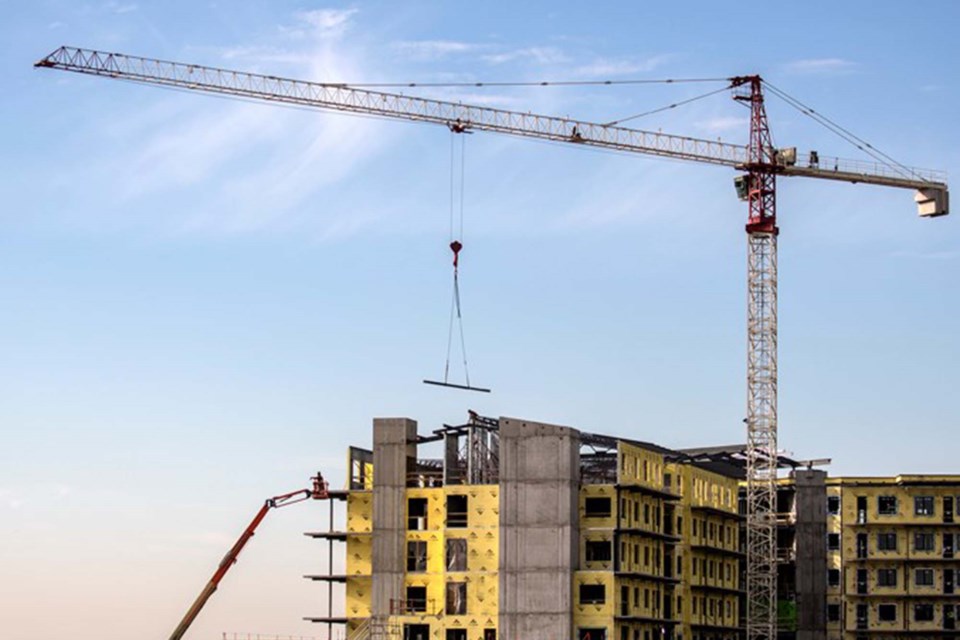Of Canada’s 150 largest cities, St. Albert experienced the greatest increase in residential vacancy rates over the past decade, according to a recent study by Point2 Homes.
Statistics Canada gathers data about vacancy rates, defined as private dwellings that are unoccupied, or occupied temporarily by a person with primary residence elsewhere. Point2 Homes found St. Albert’s vacancy rate increased 93 per cent from 2011 (with 477 unoccupied dwellings amounting to a vacancy rate of two per cent) to 2021 (with 1,081 unoccupied dwellings, amounting to a four per cent vacancy rate).
Although the vacancy rate in Canada’s 150 largest cities remains relatively high at eight per cent, Point2 Homes found the rate has dropped since the previous 2016 census when it climbed to 8.7 per cent, nearing the national vacancy rate in 2001 (7.8 per cent).
Dennis Faulkner, a real estate agent at Re/Max River City who lives in St. Albert, said the spike in the city can likely be attributed to a phenomenon where people become “accidental landlords," condo purchasers who had no intention of renting out their properties, but who couldn't get out of the condo market.
Faulkner noted the issue isn’t specific to St. Albert, and can be seen throughout Alberta — especially in Edmonton — where he said corporations overbuilt both apartments and condos.
According to Point2 Homes’s study, Edmonton’s vacancy rate climbed from seven to eight per cent, while Calgary’s remained the same over the decade, sitting at five per cent. Grand Prairie’s also rose from eight to 10 per cent over the past 10 years.
Some mid-size Alberta cities, however, have seen a drop in their vacancy rates. Airdrie’s vacancy rate fell to three per cent in 2021, down from four per cent in 2011. Similarly, vacancy rates in Spruce Grove also fell from five per cent to three per cent.
Though Faulkner noted St. Albert is an example of wider trends throughout the province, he highlighted that the city has unique features that might also contribute to more vacancies in condos.
“If you look at the demographics, this really is a family community,” Faulkner said, noting that some families might be unable to afford to buy a house, but want to get their children set up for school and need extra room. “You don’t need to advertise your single-family home for renters, just word of mouth will fill it.”
Alexander Whalley, a University of Calgary professor in the department of economics, said Faulkner’s theory seems plausible.
“You have people who invest in a property not really looking to be a landlord … not really looking to rent it out, but then the circumstances change — the market changes — and they find themselves in that position,” Whalley said.
Looking at Canada’s vacancy-rate movement as a whole, Whalley said the increase in real estate value resulting from the pandemic period means that many might have jumped at the chance to sell their property in recent years.
However, with Alberta moving from an oil market boom to greater uncertainty over the past decade, Whalley noted the province might have grown slower than expected. Accordingly, more residential space might have been built than was actually needed in an area.
Data paints uncertain picture
Whalley noted, however, the vacancy rate measured by Point2 Homes is somewhat uncertain, as Statistics Canada’s measure of dwellings unoccupied by their usual residents can encompass a variety of scenarios.
For example, some dwellings might be vacant as they transition between occupants; while the dwelling might be typically occupied, that vacancy then becomes captured in the census.
“I think it’s an open question,” Whalley said of how to interpret Point2 Homes’s findings. “It’s interesting to think about the changes, and it certainly matters for residents and property owners in St. Albert to figure out what’s going on.”
In an email, St. Albert spokesperson Cory Sinclair said the City is not aware of “any definitive cause to explain the study’s findings for St. Albert.”
Sinclair said the city’s vacant lot inventory remains at 385 vacant lots, a figure he said is in line with previous years.
“Our experience has been that demand for housing is high in St. Albert,” Sinclair said in the email.




